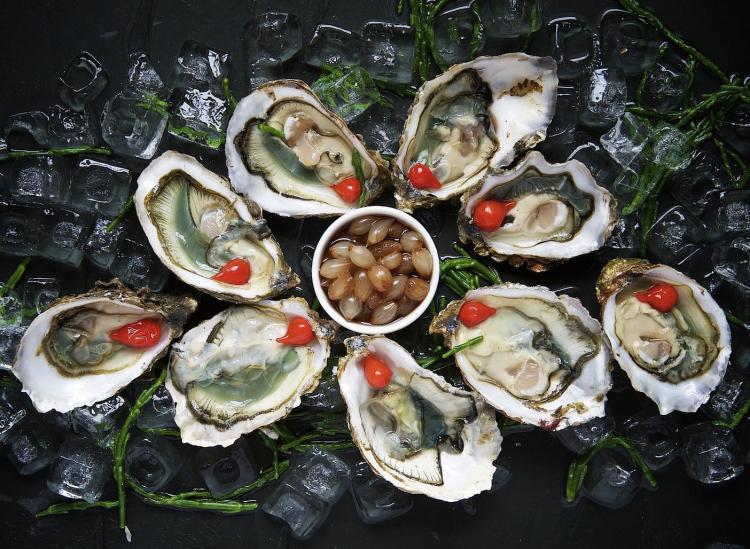Here’s Everything You Need To Know About Oysters

Pixabay
You either love ’em or hate ’em. There’s usually no in-between feelings about oysters. Some common words that are often used to describe these saltwater molluscs are salty, meaty and briny. You can eat them raw, on the half-shell, fried or take them out of the shell for soups, stews, pasta dishes. (You should really check out crispy oyster omelets if you travel to Thailand.)
Raw oysters have long been admired as an aphrodisiac since they’re high in zinc, Vitamin E and have a reputation for being helpful with fertility. They also contain amino acids, which have been known to spark the production of sex hormones. As the warmer weather approaches, you’ll probably notice intriguing signs outside of all your favorite local restaurants for dollar oyster happy hour.
Oysters are usually found along the Atlantic Coast and the Gulf of Mexico in North America. They often live in tidal creeks and estuaries, a partially contained coastal body of brackish water (water with more salinity than fresh water) with rivers and streams flowing into it and an open connection to the sea. Oysters are actually pretty adaptable and can make it through a wide range of water conditions. In addition to oysters being delicious, they’re a huge part of the coastal environment because they help protect the shorelines from erosion.
The Gulf of Mexico produces more than 500 million pounds of in-shell oysters each year, according to the Gulf Coast Seafood site. The size of oysters can vary depending on where they’re harvested, but typically eastern oysters are the biggest in the U.S. because of the gulf’s warm waters. You’ll find them chilling in oyster reefs across the gulf, which include five states: Texas, Louisiana, Mississippi, Alabama and Florida. Gulf oysters can be distinguished from others by their sweeter flavor and softer texture than their northern relatives.
How To Order Oysters
When an oyster craving strikes and you’re at a seafood spot with a bunch of options, it might be helpful to know some lingo. At the very least you can order by size and tell them whether you’d prefer them salty, mild, briny or buttery. Atlantic Oysters (e.g. blue points, malpeque and wellfleet), which are just about the most common, are found along the North American Atlantic coast, all the way from Canada to the Gulf of Mexico. These tend to be larger and tear-drop shaped with a smooth shell and they have a crisp and clean flavor.
Pacific Oysters (e.g. Penn Cove Select, Fanny Bay and Kusshi) come from the Pacific coast, have shells with ruffled edges and their flavor is usually briny, herbaceous and creamy. European Flat Oysters (e.g. Belon) have the boldest flavor with a gamey aftertaste. They come from the Brittany region of France and they’re saucer-shaped with a shallow shell and seaweed-green color.
Olympia Oysters only come from the U.S. Pacific West Coast and they’re harder to cultivate. They have a creamy texture with a sweet celery flavor and a metallic aftertaste. Kumamoto Oysters are imported from Japan and they grow relatively slowly. The oyster itself is small and they come across as creamy and buttery with a sweet, mild and nutty flavor. These are the most approachable and the best for first-time oyster eaters.
How To Eat Oysters
While there’s really no right way to eat a raw oyster, here’s how it’s usually done: Restaurants or raw bars will give you a tiny fork, which you’ll use to gently detach the oyster, while keeping it in the shell. Then comes garnishing. Mignonette sauce isn’t for everyone, but it pairs really well with the saltwater taste of the oyster. The sauce is made using minced shallots, cracked pepper and red-wine vinegar, but if this scares you, there’s always the option to squeeze a little lemon juice on top and call it a day.
Bring the oyster to your nose, get all of those ocean vibes, and then slurp the oyster meat and liquid into your mouth. Maybe chew it a little before sending it down. Now you’ll be a pro the next time your boss takes the team for dollar oysters.











